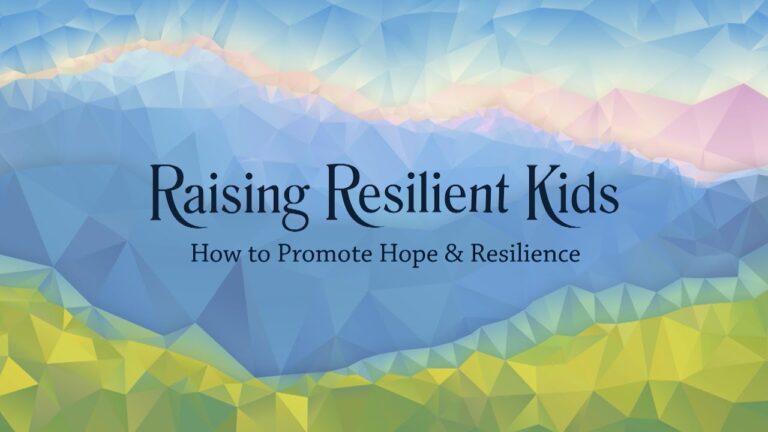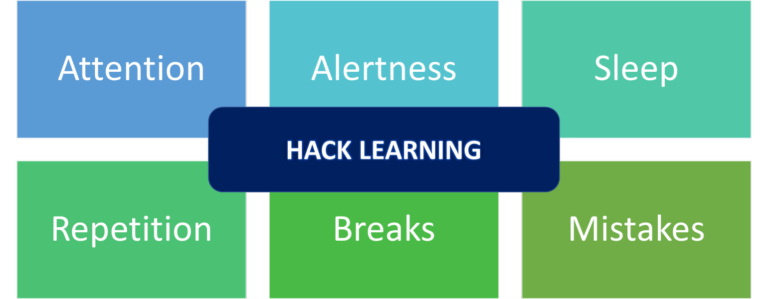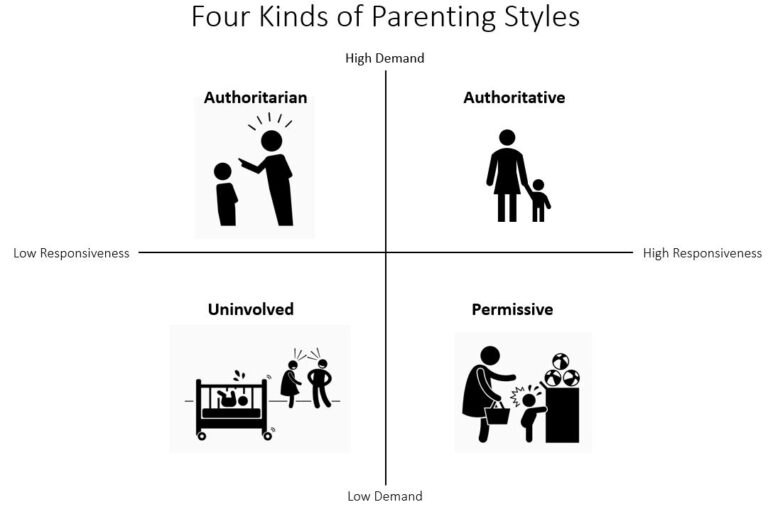Early childhood is a critical period for the overall development of children. It is during these formative years that the foundation for their physical, cognitive, and social-emotional well-being is laid.
Among all the stages of childhood, the first 5 years hold exceptional significance. This period is particularly crucial for the development of children’s brains, shaping their abilities and potential for years to come.
The human brain undergoes remarkable growth and development during early childhood. In fact, by the age of 5, a child’s brain has already reached about 90% of its adult size.
This rapid growth is accompanied by extensive neural connections and the establishment of neural pathways, which serve as the building blocks for learning, thinking, and problem-solving. It is during this time that the brain is most receptive to external stimuli and experiences, making it a critical window of opportunity for maximizing a child’s developmental potential.
Furthermore, the first 5 years of life are characterized by significant milestones in physical development. From learning to crawl, walk, and run, to refining fine motor skills like grasping objects and using utensils, children undergo tremendous physical transformations. Proper nutrition, exercise, and healthy habits during this period play a vital role in ensuring optimal physical growth and development.
In addition to physical growth, cognitive development takes center stage in the early years. The brain’s capacity for language acquisition and cognitive processing experiences a rapid expansion. Children begin to understand and use language, gradually building their vocabulary and communication skills. This period is also marked by significant leaps in cognitive abilities, such as memory, attention, problem-solving, and creativity. The cognitive stimulation and experiences provided to children during these crucial years significantly impact their cognitive development and shape their learning abilities throughout their lives.
Equally important is the social and emotional development that takes place in the first 5 years. This period is characterized by the formation of secure attachments with parents, caregivers, and other family members. These early relationships provide a foundation for emotional well-being, trust, and social skills. As children grow, they start to develop emotional regulation, empathy, and social awareness. The quality of social interactions and relationships during this period greatly influences their social and emotional development, impacting their ability to build relationships, manage emotions, and navigate social situations later in life.
Let’s learn more about below points in depth ( tap / click to jump to the respective topic )
1. Building Brilliant Minds: Unleashing Cognitive Development in the First 5 Years
3. Healthy Habits, Happy Kids: The Importance of Physical Development in the first 5 years
4. Building a Bright Future: The Long-Term Impact of Early Childhood Development of upto 5 years
5. Early Intervention: Building Strong Foundations for Lifelong Success for you kid below 5 year old
6. Conclusion
Building Brilliant Minds: Unleashing Cognitive Development in the First 5 Years
During the first 5 years of a child’s life, cognitive development ( which means how children think, explore and figure things out ) is the most critical process which takes place.
The brain undergoes remarkable growth and experiences significant changes that lay the foundation for learning, thinking, and problem-solving abilities. Let’s explore the key aspects of cognitive development during this critical period.
1. Brain development during early childhood:
The early years are characterized by rapid brain development. Neural connections multiply, and the brain’s architecture begins to take shape. Synaptic pruning occurs, refining the neural pathways and strengthening connections that are frequently used. This process is influenced by both genetics and the environment, highlighting the crucial role of external stimuli and experiences in shaping a child’s cognitive abilities.
2. Language acquisition and communication skills:
The first 5 years mark a period of significant language development. Children start to understand and use language, gradually expanding their vocabulary and refining their communication skills. They go from babbling to uttering their first words, eventually constructing sentences and engaging in conversations. The rich language environment provided to children during this time, including talking, reading, and singing, plays a vital role in their language acquisition and development.
3. Cognitive milestones and cognitive stimulation:
The first 5 years witness remarkable cognitive milestones as children’s thinking abilities expand. They begin to grasp cause-and-effect relationships, understand object permanence, and exhibit symbolic play. Problem-solving skills emerge as they explore their surroundings, experiment with objects, and engage in imaginative play. Cognitive stimulation, such as providing age-appropriate toys, puzzles, and activities, helps foster cognitive growth and enhance children’s problem-solving and critical thinking skills.
It is crucial to note that cognitive development in the early years is not solely determined by innate abilities. The environment and experiences children are exposed to play a crucial role. A child’s cognitive development is significantly impacted by providing sensory experiences, opportunities for research and discovery, and engaging in stimulating activities. Parents, caregivers and educators must support children’s cognitive development by providing diverse experiences that stimulate curiosity, creativity and problem-solving skills.
Simple activities like storytelling, playing with blocks, and engaging in pretend play can foster language development, spatial awareness, and cognitive flexibility. Additionally, exposing children to diverse experiences, such as visits to museums, nature walks, and interactive playdates, broadens their knowledge and expands their cognitive horizons.
In conclusion, a child’s cognitive development throughout the first 5 years of life is an amazing process. It paves the way for learning and intellectual development; for the rest of the child’s life.
Brain development, language acquisition, and cognitive milestones during this period set the stage for a child’s future cognitive abilities.
Parents, carers, and educators can dramatically improve children’s cognitive development and give them the lifetime learning and problem-solving abilities they require by creating a stimulating and loving environment.
Building Happy Hearts: The Path to Social and Emotional Development in the first 5 years of Childhood
An infant’s first 5 years of life are a child’s most important years in terms of social and emotional growth. During this time, children form vital attachments, learn to regulate their emotions, and develop the foundation for healthy relationships. Let’s delve into the three key aspects of social and emotional development in early childhood.
1. Formation of secure attachments:
Secure attachments serve as the cornerstone of social and emotional development. Infants bond with their most important caregivers, usually their parents. Parents provide them with a strong & necessary sense of security, trust, and security.
These early relationships lay the groundwork for future relationships, influencing a child’s ability to form healthy attachments and navigate social interactions throughout their lives. Nurturing and responsive caregiving during this period foster a child’s sense of security and well-being, promoting healthy social and emotional development.
2. Emotional regulation and empathy:
The first 5 years mark a significant period of growth in emotional regulation and empathy. Children gradually learn to identify, understand, and manage their emotions. They develop strategies to cope with frustration, anger, and sadness, building essential skills for self-regulation. Empathy begins to emerge as children gain an understanding of others’ emotions, allowing them to connect and respond with compassion. Encouraging emotional expression, providing guidance on managing emotions, and modeling empathy play pivotal roles in fostering emotional regulation and empathy in early childhood.
3. Relationships and social interactions necessities :
The social connections and interactions that a child makes in first 5 years, have a significant impact on their social and emotional development. Engaging in playdates, interacting with peers, and participating in group activities promote social skills, cooperation, and conflict resolution abilities. These experiences expose children to diverse perspectives, help them understand social norms, and enhance their communication skills. Furthermore, positive relationships with parents, caregivers, and other significant individuals provide a secure base for exploration, emotional support, and the development of social bonds.
To support social and emotional development in the first 5 years, parents, caregivers, and educators can implement various strategies. Creating a nurturing and responsive environment, providing consistent routines, and offering opportunities for social interactions and cooperative play are key. Additionally, teaching emotional vocabulary, validating children’s emotions, and encouraging perspective-taking can enhance emotional regulation and empathy.
In conclusion, the first 5 years of a child’s life lay the solid foundation for social and emotional development for rest of child’s life. Through secure attachments, emotional regulation, and social interactions, children develop vital skills that influence their relationships and emotional well-being. By fostering supportive environments and providing guidance, parents, caregivers, and educators can nurture healthy social and emotional development in early childhood. Investing in these crucial aspects sets children on a path towards positive relationships, resilience, and emotional intelligence that will benefit them throughout their lives.
Healthy Habits, Happy Kids: The Importance of Physical Development in the first 5 years
A child’s first 5 years of life are a time of substantial physical development and fast growth. From crawling to walking, fine motor skills to gross motor skills, this critical stage sets the stage for a child’s overall physical well-being. Let’s explore the three key aspects of physical development during early childhood.
1. Rapid growth and changes in the body:
The first 5 years witness remarkable growth and changes in a child’s body. Within the first few months, babies double their birth weight and continue to grow quickly. During this time bones lengthen, muscles strengthen, and the body proportions change. This period is characterized by the development of motor skills, from rolling over to sitting up, crawling, and eventually walking.
For promoting healthy growth and physical development at this time, proper nutrition, including a balanced diet rich of essential nutrients, is essential.
2. Importance of nutrition and healthy habits:
Proper nutrition and healthy habits are essential for optimal physical development in the first 5 years. An essential fuel for growing and promoting strong bones and muscles is a nutrient-dense diet. Variety of fresh fruits, vegetables, lean protein, whole grains and millets are all included in this diet. The cultivation of healthy habits like frequent exercise, enough sleep, and good hygiene practises also contribute to general physical well-being.
3. Motor skills development:
The first 5 years mark significant milestones in motor skills development. Gross motor skills involve the movement and coordination of large muscle groups, such as crawling, walking, running, jumping, and balancing. Fine motor skills involve the dexterity and control of smaller muscles, enabling tasks like grasping objects, using utensils, and eventually writing. Providing opportunities for both gross and fine motor skill development through age-appropriate activities, play, and exploration helps children strengthen their physical abilities and coordination.
To support physical development in the first 5 years, parents, caregivers, and educators can implement various strategies. Creating a safe and stimulating environment that encourages movement and exploration is crucial. Engaging in age-appropriate physical activities, such as tummy time, playing with balls, and providing manipulative toys, supports the development of both gross and fine motor skills. Additionally, establishing healthy eating habits, promoting regular physical activity, and ensuring sufficient rest contribute to overall physical well-being.
In conclusion, the first 5 years of a child’s life play a pivotal role in physical development.
Rapid growth, proper nutrition, and the development of motor skills lay the foundation for a child’s physical well-being. By providing a nurturing environment, promoting healthy habits, and engaging in age-appropriate activities, parents, caregivers, and educators can support optimal physical development in early childhood. Investing in physical development during this critical period sets children on a path towards a lifetime of healthy habits and physical well-being.
Building a Bright Future: The Long-Term Impact of Early Childhood Development of upto 5 years
Early childhood development upto the age of 5, sets the stage for a lifetime of success and well-being. The experiences and opportunities children have during their early years of upto the age of 5; have far-reaching effects on their future.
Let’s delve into the three key aspects of the long-term impact of early childhood development.
1. Lifelong benefits of a strong foundation:
Investing in early childhood development creates a strong foundation that benefits individuals throughout their lives.
Neural connections and crucial abilities are developed in the early years of upto 5 years of age, which is a crucial time for brain development.
Providing children with nurturing environments, quality education, and stimulating experiences during this time fosters cognitive, social, and emotional development.
Children that have a solid foundation have the abilities, resilience, and confidence to overcome obstacles. They can follow their big life goals, and succeed in a variety of aspects of life.
2. Positive impact on educational attainment and career success:
Early childhood development has a profound impact on educational attainment and future career success. Children who have access to quality early education and supportive environments are more likely to perform well academically throughout their school years, this is proven by various researches conducted in US.
The cognitive skills, language development, and social-emotional competencies acquired during early childhood lay the groundwork for future learning. This early advantage translates into higher educational attainment, increased career opportunities, and better long-term financial outcomes.
3. Prevention of health and social issues in adulthood:
If society, parents, care givers, teachers wishes to prevent health and social problems in adulthood by making investments in early childhood development is the best way to invest in your child.
A variety of health issues later in life can be avoided by giving children a good start that includes appropriate diet, access to healthcare, and supportive relationships.
Supporting children’ social-emotional growth, developing resilience, and encouraging good connections also lower their chance of developing mental health problems, substance misuse, and dangerous behaviour as adults.
By addressing these issues during the critical early years, we can create a foundation for healthier and more socially responsible individuals.
Knowledge of how early childhood development upto the age of 5, affects individuals long after they are born is essential for individuals, their families, and society as a whole.
By prioritizing early childhood programs, parental support, and community initiatives, we can create an environment that nurtures the full potential of every child.
Early actions can assist to create healthier, more successful individuals and improve the general well-being of our communities. Examples include high-quality preschool education, parent education programmes, and access to healthcare.
To sum up, early childhood development has an enormous and lasting effect on the lives of individuals. A strong foundation established during the early years leads to lifelong benefits, including educational achievement, career success, and overall well-being. Society or parents / caretakers / teachers can avert future health and social problems, promote resilience, and build a better future for future generations by investing in early childhood development.
Early Intervention: Building Strong Foundations for Lifelong Success for you kid below 5 year old
Supporting kids who may be dealing with disabilities or developmental delays requires early intervention. Timely identification and intervention can significantly impact a child’s overall development and improve their long-term outcomes. Let’s explore the three key aspects of the importance of early intervention.
1. Identifying and addressing developmental delays or disabilities:
For example, a child showing delays in language development may receive speech therapy to improve their communication skills. Similarly, if a child exhibits challenges with motor skills, early intervention may involve occupational therapy to help them develop coordination and dexterity. By addressing developmental delays at an early stage, children have a greater opportunity to catch up, develop necessary skills, and thrive in their overall development.
2. What’s the role of parents, caregivers, and educators ?
The early intervention process depends heavily on parents, caretakers, and teachers. They are the first observers and facilitators of a child’s growth and development. For instance, a parent may see that their child struggles in interactions with others and seek expert advice to investigate early intervention possibilities like behavioural treatments or social skills training.
Parents and other carers play a significant role in the development of the kid. They can do the same; by being actively involved with them, keeping track of their growth, and working with intervention professionals.
3. What’s the need of access to quality healthcare and early intervention programs ?
Effective early intervention depends on having access to high-quality healthcare and early intervention programmes.
For example, pediatricians can conduct developmental screenings during routine check-ups to identify any potential delays or concerns. Early intervention programs, such as Early Head Start or state-funded early intervention services, provide specialized support tailored to a child’s specific needs. These programs may include speech and language therapy, physical or occupational therapy, or educational interventions. By ensuring access to these services, children receive the necessary support and resources to thrive.
By prioritizing early intervention, we can make a significant difference in children’s lives. Real-world examples demonstrate the positive impact it can have. For instance, a child with autism spectrum disorder who receives early intervention can observe improvements in their speech abilities, social connections, and general quality of life.
A further example is a young kid with hearing problems who receives early intervention such as cochlear implants or hearing aids, allowing them to acquire language and communication skills on par with their classmates.
In conclusion, early intervention is crucial for identifying and addressing developmental delays or disabilities in children. It helps educators, parents, and other family members to actively participate in promoting a child’s growth.
We can maximise the likelihood of successful outcomes and provide kids the best start in life by guaranteeing access to high-quality healthcare and early intervention programmes.
Real-world success stories show that early intervention paves the way for a promising future and helps kids to realise their full potential.
Conclusion
In conclusion, the first 5 years of a child’s life play a fundamental role in their health and development, particularly in relation to brain development.
It is during this critical period that the groundwork is laid for physical growth, cognitive abilities, and social-emotional well-being.
Investing in early childhood development and providing nurturing environments, appropriate stimulation, and access to healthcare and education can yield lifelong benefits for children.
As parents, caregivers, and members of society, it is essential to recognize the significance of the first 5 years and prioritize the well-being and development of our children during this crucial stage.




